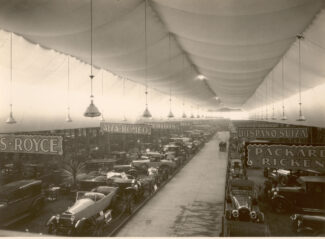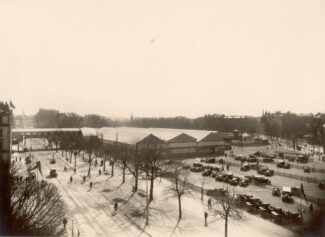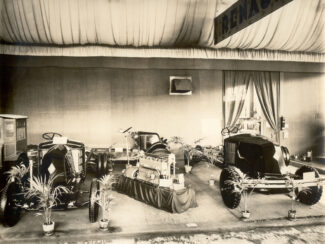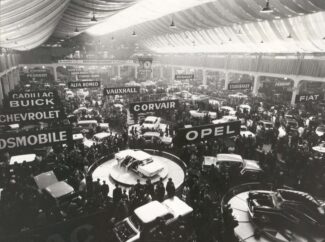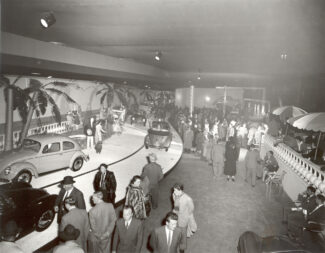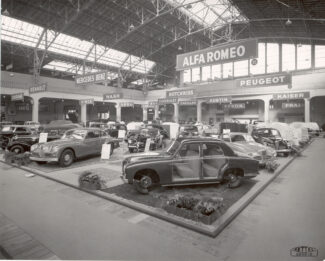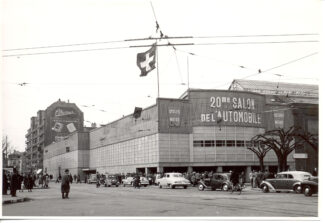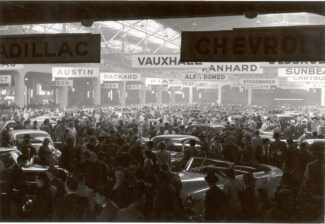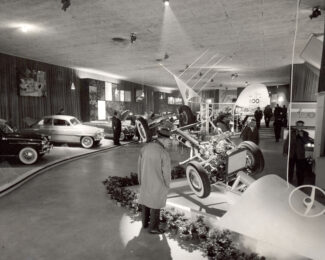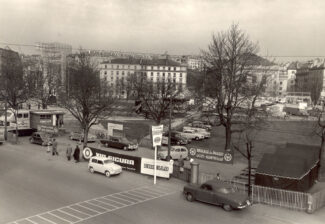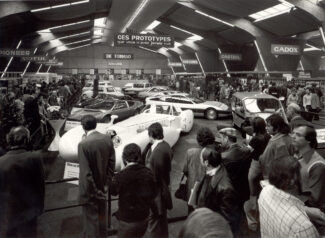
GIMS History
Since its creation
The Geneva Motor Show has been intimately linked to the development of the automobile, to the evolution of society with its economic concerns that go beyond the automobile product, and finally to the history of mankind. As visionary as they were, the pioneers of 1905 could not have imagined that their event would become, over the decades, one of the main international meetings of the automobile industry. Approved by the OICA since 1924, the GIMS has become one of the most important exhibitions in the world, positioning Geneva and Switzerland as one of the world’s crossroads of the industry, even though the country no longer has a car manufacturer.
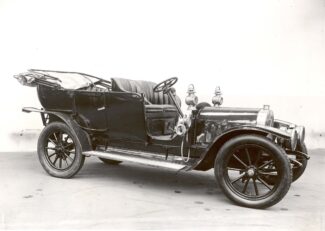
1905-1909
The automobile’s origin is commonly attributed to Gottlieb Daimler and Wilhelm Maybach’s “Benz Patent Motorwagen,” which debuted at the Paris World Fair in 1889. However, earlier studies and experiments with motor vehicles were conducted throughout Europe, including Switzerland. Notably, Swiss engineers made several significant contributions to the automotive sector in the late 19th century, such as Henriod’s front-wheel drive and gear-transforming flywheel, Popp’s overhead camshaft, Weber’s progressive extension pulley gearbox, and Dr Guglielminetti’s development of road asphalting. At the start of the 20th century, Switzerland experienced a boom in its car industry, with over 70 manufacturers and growing combined revenue. The country held the first Swiss National Automobile and Cycle Exhibition in Geneva in 1905 and Zurich in 1907, showcasing its reputation for producing reliable and luxurious vehicles.
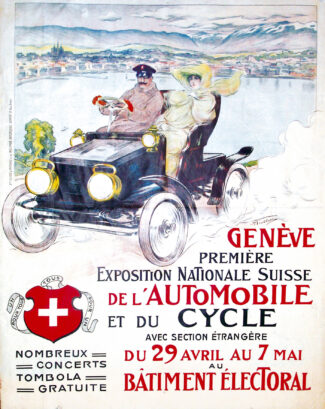
1910-1919
The economic downturn that led to the Great War severely reduced Swiss car production. Only Pic-Pic (closed in 1922) and Martini (until 1934) survived, as did the commercial vehicle manufacturers. From 1920 onwards, the major producing countries such as the USA, France, England, Germany and Italy flooded the Swiss market with cheap, practical and yet comfortable vehicles. The tastes and means of the clientele were no longer those of the pre-war period.
At the beginning of the 1920s, the rise of the automobile made distances shorter, life easier and happier, and activities more varied and enjoyable. Emergency vehicles (police, fire brigade and ambulances) were also introduced, which were much more efficient and faster than horse-drawn carts. It was also during this period that a Highway Code was drawn up, leading to the creation of a legal and fiscal system around the automobile (fines, import and traffic taxes, taxes on petrol, etc.) and the first motorists’ associations. In economic terms, in addition to the sale and maintenance of vehicles, an ecosystem around the car emerged with financing services, insurance and the first accessorizing companies, both for the vehicle and its occupants (suits, furs, mackintoshes, dust covers, etc.).
1920-1929

1930-1939
The 1933 Geneva International Motor Show had a mixed atmosphere, marked by economic recovery and impending disaster. Despite the aftermath of “Black Thursday,” German manufacturers presented new technologies and Auto-Union, a merger of four brands. American manufacturers also established themselves in Europe, with GM, Ford, and Chrysler setting up assembly plants. The Show became renowned for luxury cars and attracted distinguished visitors, while Citroën, Renault, and BMW displayed products for the “Everyman.” Experimental prototypes were also showcased, including aerodynamic cars and gas generator engines, which would prove valuable during the Second World War.
1950-1959
It was during the 1950s that the recovery of the car industry in Europe, across all segments and origins, really took shape. Eastern and Northern European manufacturers gained recognition, the style of cars evolved in depth, notably under the influence of Battista (Pinin) Farina, synthetic materials made their debut in automobile construction and the safety of occupants was addressed with the 3-point belt offered by Volvo as standard from 1957.
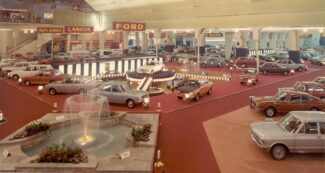
1960-1969
In the 1960s, progress and revolutions were happening in multiple disciplines. Switzerland experienced its first traffic jams due to the development of the motorway network. The US introduced a new car model segment – the “compact” family car – represented by Chevrolet Corvair, Ford Falcon or Plymouth Valiant. The Europeans launched Alfa Romeo Giulia, BMW 1600, Renault 16, and Peugeot 204/304. Technical concepts like the Wankel rotary engine, the continuously variable transmission, and front disc brakes were introduced. Sports cars like Jaguar Type E, Ferrari 250 GT, and Porsche 911 were launched. Brand mergers happened, such as Citroën acquiring Maserati and Panhard, and Volkswagen becoming the owner of NSU and Auto-Union. The Geneva Motor Show grew and a new exhibition site – the current Palexpo – was built in 1968.
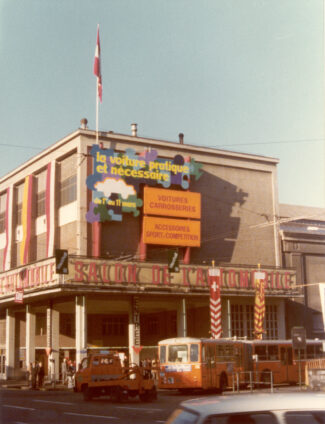
1970-1979
In the competitive 1970s, world automobile production grew despite regulations on pollution, noise, and safety. The decade introduced new features like turbo and fuel injection systems, and the first oil crisis in 1973 caused setbacks. Small cars like the Renault 5 and VW Golf kept European manufacturers afloat while the Japanese market thrived. Safety innovations like ABS became standard in high-end vehicles. The Geneva Show welcomed luxurious and provocative creations from coachbuilders like Felber, Monteverdi, and Sbarro. Palexpo project construction started in Le Grand-Saconnex in July 1977.
1980-1989
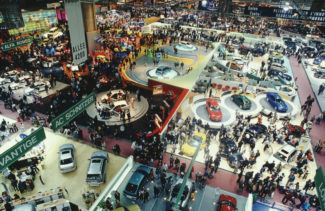
1990-1999
The Middle East was in turmoil, the economy slowed, and the car industry suffered. Manufacturers consolidated, with BMW buying Rolls-Royce, VW taking over Bentley and Skoda, and Daimler merging with Chrysler. European brands moved to cheaper locations, and Americans chose Mexico. Japan saw a 30% drop in production. Manufacturers turned to China, with PSA setting up Citroën in China and VW doubling its stake with FAW. City cars like Renault Twingo, Opel Corsa, and Ford Ka hit the market. SUVs emerged, with Toyota RAV-4 and Honda HR-V. Airbags became standard, and electrification made a remarkable entry. The Prius became the first hybrid model in 1997. The Geneva Motor Show expanded to cover over 50,000 m2, with nearly 670,000 visitors on average in the 1990s. It became the only annual show in Europe, strengthening its position on the world stage. In 1998, Hall 6 was planned to connect Halls 5 and 7, with a surface area of 22,000 m2.

